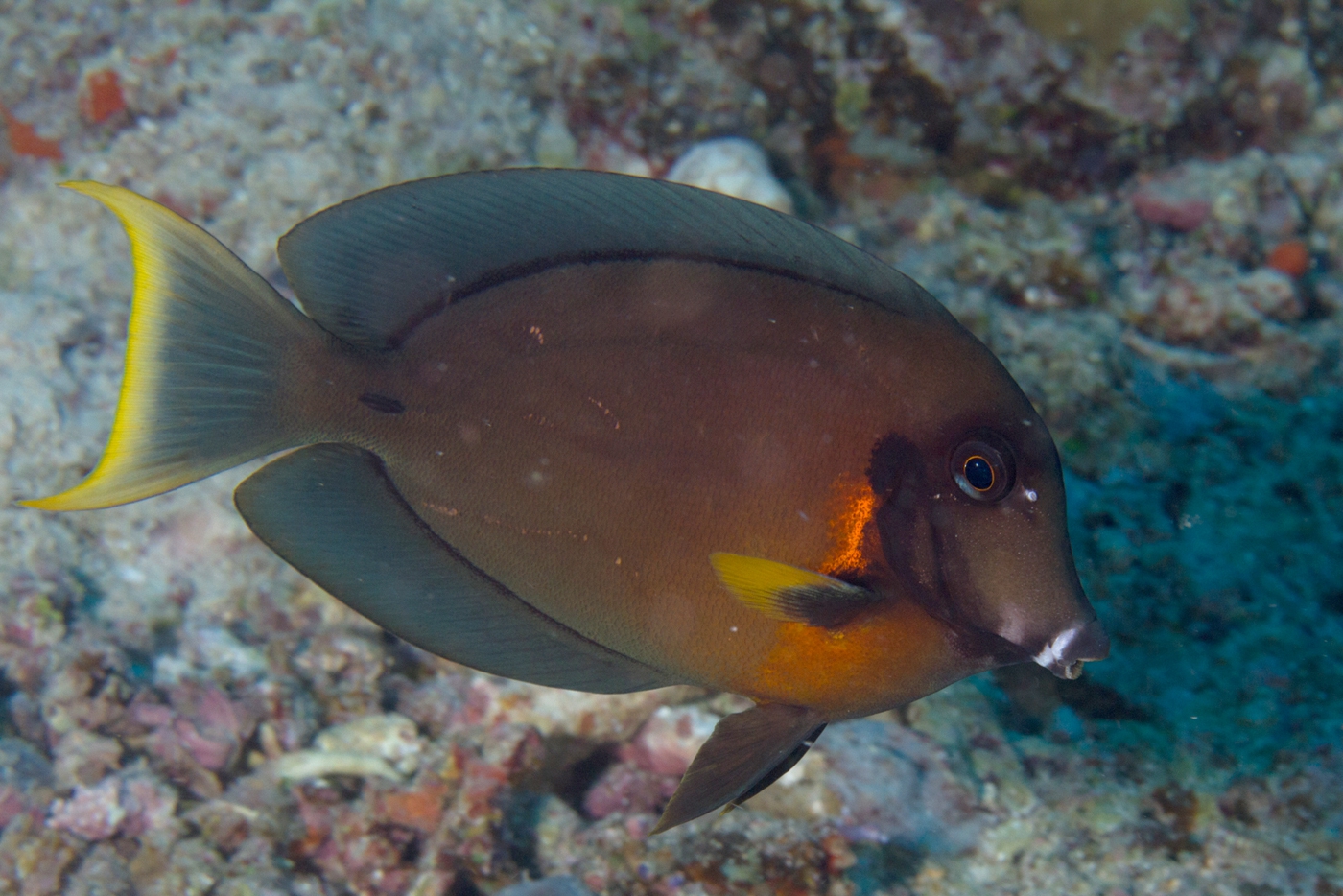| Citation |
|
Description |
Indian Ocean: Bay of Bengal (Ref. 8940) and the Andaman Sea west to Maldives and Chagos Archipelago, and east to islands of southern Indonesia at least to Bali.
Geographic Range [top]
Range Description: Acanthurus tristis is found from the Andaman Sea, southern Indonesia to the Maldive Islands and Chagos Archipelago.
Countries occurrence:
Native:
Bangladesh; British Indian Ocean Territory; Christmas Island; Cocos (Keeling) Islands; India (Andaman Is., Nicobar Is.); Indonesia; Malaysia (Peninsular Malaysia); Maldives; Myanmar; Sri Lanka; Thailand
FAO Marine Fishing Areas:
Native:
Indian Ocean – western; Indian Ocean – eastern; Pacific – western central
Additional data:
? Lower depth limit (metres): 26
? Upper depth limit (metres): 2
Range Map: Click here to open the map viewer and explore range.
Population [top]
Population: Acanthurus tristis is rare in the Seychelles, Christmas and Cocos Islands (J.H. Choat pers. comm. 2010). It is common in Bali, Indonesia, but not abundant (L. Rocha pers. comm. 2010). This species is a target reef fish in western Thailand. One hundred and twenty-four individuals were recorded from 14 sites off the western coast of Thailand, four months after the Sumatran tsunami disaster (Allen 2005).
Current Population Trend: Stable
Additional data:
? Population severely fragmented: No
Habitat and Ecology [top]
Habitat and Ecology:
Acanthurus tristis occurs on shallow lagoon and seaward reefs, in areas of mixed coral, rock or sand. It generally occurs in deeper and more sheltered waters, frequently over sand and rubble bottoms (J.H. Choat pers. comm. 2010). It is classified as a detritivore (Choat and Beood pers. obs. in Green and Bellwood 2009). The sexes are separate among the acanthurids (Reeson 1983). Acanthurids do not display obvious sexual dimorphism, males assume courtship colours (J.H. Choat pers. comm. 2010). Juveniles of this species resemble Centropyge eibli (Kuiter and Debelius 1994).
Systems: Marine
Use and Trade [top]
Use and Trade: Acanthurus tristis is a component of the aquarium trade. Online prices range from from $37.99-$59.95 per individual (L. Rocha pers. comm. 2010). It is a targeted food fish in western Thailand (Allen 2005). It is caught by setnets and traps (Sri Lanka; DeBruin et al. 1995).
Threats [top]
Major Threat(s): There are no major threats known for this species.
Surgeonfishes show varying degrees of habitat preference and utilization of coral reef habitats, with some species spending the majority of their life stages on coral reef while others primarily utilize seagrass beds, mangroves, algal beds, and /or rocky reefs. The majority of surgeonfishes are exclusively found on coral reef habitat, and of these, approximately 80% are experiencing a greater than 30% loss of coral reef area and degradation of coral reef habitat quality across their distributions. However, more research is needed to understand the long-term effects of coral reef habitat loss and degradation on these species populations. Widespread coral reef loss and declining habitat conditions are particularly worrying for species that recruit into areas with live coral cover, especially as studies have shown that protection of pristine habitats facilitate the persistence of adult populations in species that have spatially separated adult and juvenile habitats (Comeros-Raynal et al. 2012).
Conservation Actions [top]
Conservation Actions: There are no species-specific conservation measures in place for this species. However, its distribution overlaps several marine protected areas within its range.
Citation: Abesamis, R., Clements, K.D., Choat, J.H., McIlwain, J., Myers, R., Nanola, C., Rocha, L.A., Russell, B. & Stockwell, B. 2012. Acanthurus tristis. The IUCN Red List of Threatened Species 2012: e.T177998A1516342. http://dx.doi.org/10.2305/IUCN.UK.2012.RLTS.T177998A1516342.en. Downloaded on 05 September 2018.
Disclaimer: To make use of this information, please check the .
Feedback: If you see any errors or have any questions or suggestions on what is shown on this page, please provide us with feedback so that we can correct or extend the information provided
|


